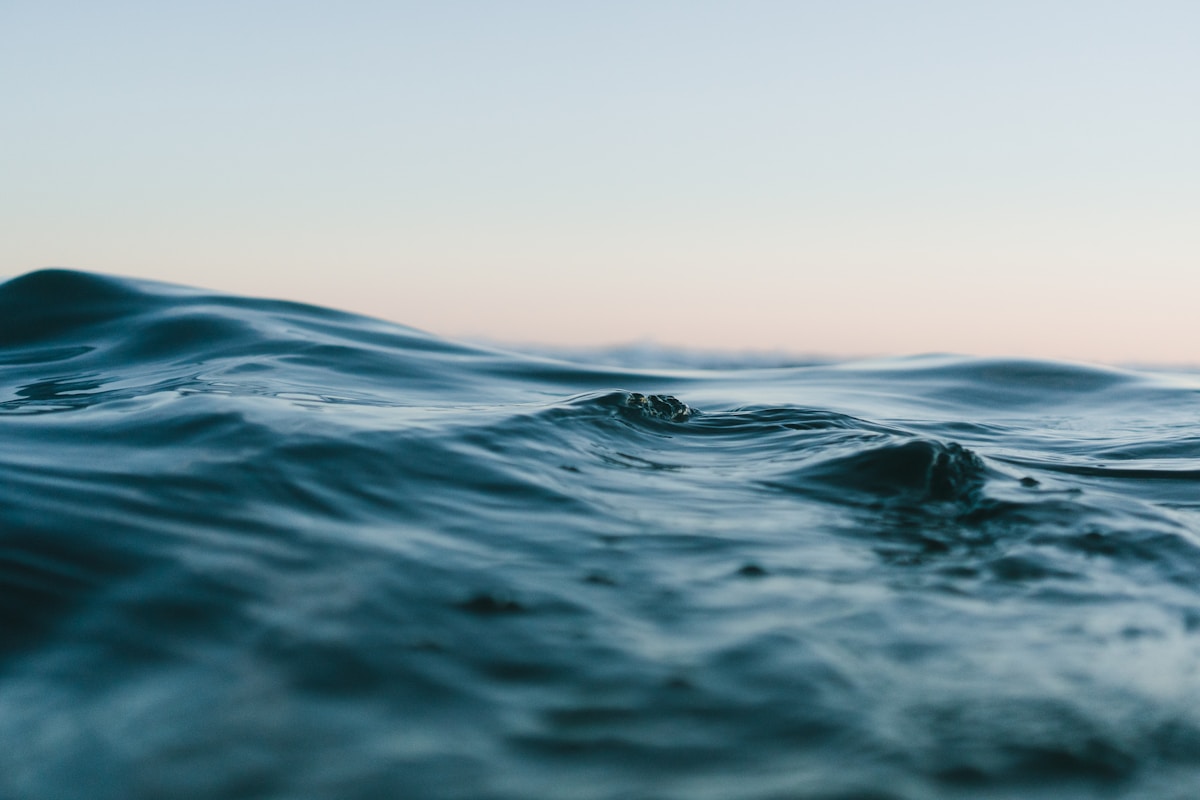Drownlight from Fathomlight is Frostpunk meets Waterworld, building humanity’s last city around a mysterious lighthouse in an endless ocean. Manage resources, make brutal moral choices, and keep the light burning or watch people vanish into darkness. Announced November 3, 2025 and published by Crytivo, this survival city builder replaces frozen wastelands with endless waves, earning the fan nickname Oceanpunk for its unique take on apocalyptic survival.
When Continents Drowned and Only Light Remained
The setup is devastatingly simple. A cataclysm swallowed continents and erased civilization. The ocean consumed everything. In this drowned world, a handful of survivors discover a solitary lighthouse standing above endless water. Around its glow, humanity makes its last stand. You are their leader, the one who must rebuild, protect, and guide the final city of humankind.
The lighthouse is not just architecture. It is life itself. Generate power, gather fuel, manage what little remains of the old world. If the light dies, people vanish into darkness. This is not metaphor. Characters literally disappear when the beacon fails, taken by something that lurks beyond the light’s reach. The game creates constant tension between maintaining the lighthouse and expanding the city, between survival today and sustainability tomorrow.
Fathomlight describes this as radial city-building, expanding outward from the lighthouse in concentric circles rather than sprawling across unlimited space. This design choice creates natural progression where every expansion pushes further from safety, deeper into danger. Early buildings cluster close to the light’s protection. Late-game structures risk the edges where shadows gather and the ocean hides its secrets.
The Frostpunk Comparison Everyone Makes
Drownlight wears its Frostpunk inspiration openly. Both games center survival around a single vital structure in hostile environments. Both force brutal moral decisions where compassion competes with pragmatism. Both feature city-building constrained by harsh resource scarcity and constant environmental threats. The comparison writes itself, and Fathomlight seems comfortable letting Drownlight occupy the Oceanpunk niche that Frostpunk defined for frozen wastelands.
What differentiates Drownlight is the ocean itself as antagonist rather than cold. Instead of coal shortages and freezing temperatures, you face devastating storms that tear apart structures and dead calms that starve your city of wind-powered energy. Instead of sending expeditions into frozen wastes, you navigate treacherous waters hiding ancient secrets and unknown dangers. The thematic shift from ice to water creates distinct survival challenges despite structural similarities.
The lighthouse mechanic has no direct Frostpunk equivalent. The generator kept people warm, but losing heat was gradual death. The lighthouse keeps people from vanishing entirely, creating binary stakes. Either the light burns or people disappear. This creates different strategic pressure where lighthouse maintenance becomes non-negotiable rather than one priority among many competing concerns.
Moral Choices With No Good Answers
Survivors arrive seeking refuge. Each new arrival brings labor, stories, and hope. They also bring new mouths to feed, more bodies demanding shelter, additional strain on dwindling resources. The light draws drifters from across the sea, and you must decide who deserves sanctuary and who gets turned away to face the ocean alone.
The game promises that survivors come with desperate requests. Deny too many and your rule collapses as people lose faith in your leadership. Grant too many and you sacrifice stability for compassion, potentially dooming everyone through unsustainable generosity. Fathomlight asks how far you will go to maintain order, what kind of world is worth rebuilding, and whether keeping people alive matters if you lose what made them human in the process.
These are not abstract philosophy debates. The moral systems tie directly into city management and survival mechanics. Decisions affect morale, loyalty, productivity, and resource consumption. A choice that seems merciful in isolation might cascade into disaster when combined with environmental catastrophe and supply shortages. The game design ensures you feel consequences rather than just selecting dialogue options.
Storms Food and the Endless Ocean
Resource management extends across multiple interconnected systems. Food production requires sustainable fishing and farming operations that compete for limited space and labor. Energy generation demands constant fuel supplies to keep the lighthouse burning and city functioning. Water collection and purification are essential despite being surrounded by ocean since saltwater kills as efficiently as thirst.
Storms arrive periodically to destroy what you built. These are not scripted events at fixed intervals. They emerge from dynamic weather systems that create unpredictable threats forcing constant adaptation. Dead calms follow storms, periods of stillness where wind turbines stop generating power and sailing expeditions cannot reach distant resource nodes. You balance preparing for disasters against expanding during good weather.
The ocean hides both resources and dangers. Expeditions venture beyond the lighthouse beam to scavenge wreckage, discover survivors, and explore mysterious locations. However, something lurks in those waters. The game teases ancient secrets and unknown threats waiting beyond the light’s reach, suggesting Lovecraftian horror beneath the waves rather than just environmental survival challenges.
Visual Identity and Atmosphere
Drownlight embraces a mystical, slightly unsettling aesthetic that separates it from realistic survival simulators. The art style creates atmospheric tension through lighting contrasts, with the warm glow of the lighthouse cutting through cold blues and deep blacks of the endless ocean. Structures built from salvaged materials and old-world wreckage tell environmental stories about what civilization lost.
The announcement trailer showcases gameplay focused on the radial city structure expanding around the lighthouse. Buildings cluster organically rather than following rigid grid patterns, creating settlements that feel improvised from desperation rather than planned with luxury. The visual language communicates fragility, with structures seemingly held together through determination and prayer more than engineering.
Weather effects play crucial atmospheric roles. Storms approach visibly across the horizon, giving warning but not reprieve. Fog rolls in reducing visibility and creating paranoia about what hides nearby. Bioluminescence from ocean life creates eerie beauty in night sequences. The art direction understands that effective horror comes from suggestion and atmosphere rather than jump scares and explicit threats.
Who is Fathomlight
Fathomlight operates as an indie studio developing Drownlight with publishing support from Crytivo. Details about team size and backgrounds remain scarce as the studio maintains low profiles typical of early-stage indie developers. The game represents their debut major project, making Drownlight a risk-heavy introduction to the competitive survival city builder genre.
Crytivo as publisher brings experience from titles like The Universim and brings marketing reach that solo developers cannot match. The partnership suggests Fathomlight focuses creative energy on development while Crytivo handles community management, press outreach, and business operations. This arrangement benefits indie studios without extensive industry connections or marketing budgets.
The studio mentions plans for a Kickstarter campaign launching soon, indicating they seek community funding to supplement development. The campaign page teases exclusive in-game perks and rewards for early backers. This crowdfunding approach suggests either Crytivo’s publishing deal provides limited funding or Fathomlight wants direct community engagement from the start to shape development priorities.
Release Window and Platform Plans
Drownlight currently has no announced release date beyond coming soon to PC via Steam. The game appeared publicly for the first time in early November 2025 with the announcement trailer, suggesting development is far enough along for marketing but not close enough to commit to launch windows. Based on typical indie development cycles, a late 2026 or 2027 release seems realistic.
The Steam page is live for wishlisting, and Fathomlight actively encourages adding the game to wishlists to track interest and notify players when announcements happen. No console versions are confirmed yet, though games in this genre typically expand to PlayStation and Xbox after establishing PC audiences. The survival city builder genre translates reasonably to controllers despite being mouse-and-keyboard focused.
An early access period seems likely given the genre and indie development context. Most survival city builders benefit from extended community feedback to refine balance, add content, and identify problems that internal testing misses. Whether Fathomlight commits to early access or pursues full release depends on funding, development progress, and strategic preferences about managing public perception.
Why Oceanpunk Might Be the Next Big Thing
Frostpunk proved that survival city builders with moral decision systems and oppressive atmospheres resonate with audiences seeking more than just logistics puzzles. However, most imitators just reskinned frozen wastelands without finding distinct identities. Drownlight’s ocean setting creates genuine differentiation that justifies comparisons rather than dismissal as a clone.
The flooded world apocalypse taps into contemporary anxieties about climate change and rising sea levels in ways that frozen wastelands cannot match. The lighthouse as humanity’s last beacon creates powerful symbolism about hope, guidance, and the fragility of civilization. The ocean as mysterious threat rather than just environmental hazard opens narrative possibilities that ice cannot provide.
If Drownlight executes its vision successfully, it could define Oceanpunk as a subgenre the way Frostpunk crystallized Icepunk. The market has room for multiple apocalyptic survival city builders if they offer distinct aesthetics, mechanics, and themes rather than just palette swaps. Fathomlight seems to understand this, committing fully to ocean-based survival rather than hedging with safe familiar elements.
FAQs About Drownlight
When does Drownlight release?
Drownlight has no confirmed release date. The game was announced November 3, 2025 as coming soon to PC via Steam. Based on typical indie development timelines, a late 2026 or 2027 release seems likely.
What platforms will Drownlight be available on?
Drownlight is confirmed for PC via Steam. Console versions for PlayStation and Xbox have not been announced but could arrive after the PC launch.
Who is developing Drownlight?
Drownlight is developed by indie studio Fathomlight and published by Crytivo. This represents Fathomlight’s debut major project. Crytivo previously published games like The Universim.
Is Drownlight like Frostpunk?
Yes, Drownlight draws heavy inspiration from Frostpunk’s survival city builder formula with moral choices and harsh resource management. The key difference is replacing frozen wastelands with a flooded world centered around a lighthouse, earning it the nickname Oceanpunk.
What happens if the lighthouse goes out?
If the lighthouse fails, people vanish into the darkness. The light is not just symbolic but mechanically essential for keeping your population safe from whatever lurks beyond the beam’s reach in the ocean.
Will there be a Kickstarter for Drownlight?
Yes, Fathomlight has announced plans for a Kickstarter campaign launching soon. The campaign will offer exclusive in-game perks and rewards for early backers who support development.
Can you explore the ocean in Drownlight?
Yes, you can send expeditions beyond the lighthouse to scavenge resources, discover survivors, and explore mysterious locations. However, the ocean hides dangers and ancient secrets that threaten these missions.
Does Drownlight have a story campaign?
The game features narrative elements about rebuilding civilization after the world drowned, making moral choices about survivors, and discovering what caused the cataclysm. Specific campaign structure details have not been revealed yet.
Conclusion
Drownlight takes the formula Frostpunk perfected and floods it, creating something familiar yet distinct through its Oceanpunk aesthetic and lighthouse-centered survival. Fathomlight understands that successful genre entries need more than mechanical competence. They need thematic cohesion that ties gameplay systems to atmosphere and narrative. The lighthouse as humanity’s last beacon creates symbolic weight that elevates resource management beyond spreadsheet optimization into something that feels meaningful. The ocean as both resource and threat, sanctuary and prison, offers richer narrative possibilities than most survival games explore. Whether Drownlight executes its vision successfully remains uncertain until players experience the finished game, but the concept alone justifies attention. For fans exhausted by post-apocalyptic settings that just swap environmental hazards without exploring what those changes mean thematically, Drownlight promises survival city building that engages emotionally and philosophically rather than just strategically. Wishlist it on Steam, watch for the Kickstarter campaign, and prepare to make the impossible choices that leadership demands when the world drowns and only your lighthouse stands between humanity and whatever waits in the darkness below.



